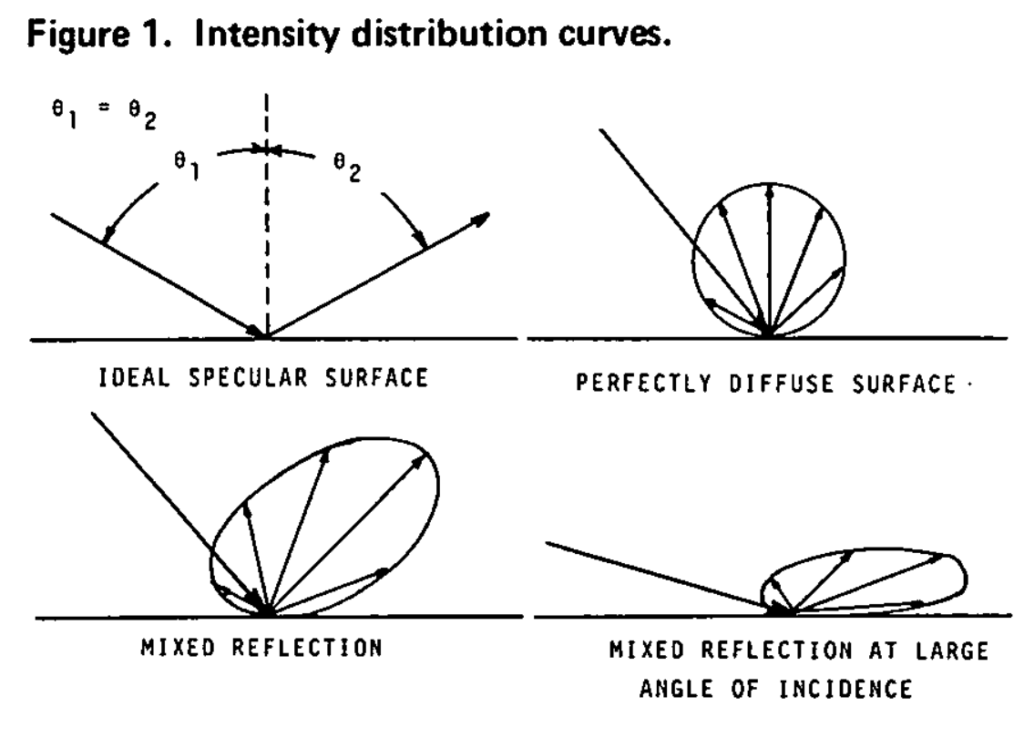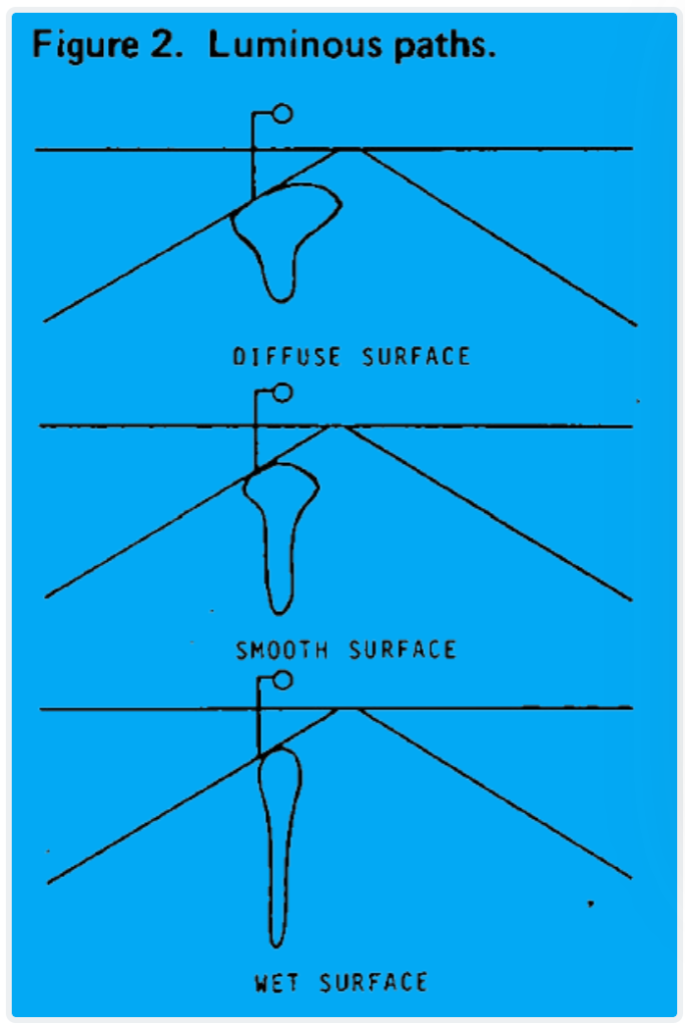I find easy way to mention Illuminance Versus Luminance. illuminance tells us how much light is hitting a surface, while luminance tells us how bright that surface looks to us.
Illumination is indeed the measure of the amount of light flux falling on a surface. It is independent of factors such as the direction of light, the number and position of light sources, the type of light source, and the type of surface. Whether the light comes from one concentrated source or multiple less intense sources, or whether the surface is polished steel or black felt cloth, the illumination remains the same. In roadway lighting, illumination is crucial for calculations but might not fully describe the observed situation.
Luminance, on the other hand, is a measure of the amount and concentration of light flux leaving a surface, which determines how an object is seen. Luminance takes into account factors such as the direction of light reaching the surface, the direction from which it is viewed, and the reflective properties of the surface itself. It’s the luminance that influences the brain’s perception of an object’s brightness. The apparent luminance of a surface area depends on the amount of light reflected towards the observer’s eye, which is influenced by the reflective properties and the incident light’s direction.
Illuminance vs Luminance Explanation
Current roadway lighting design standards in the United States, set by the Illuminating Engineering Society and approved by the American Standards Association, aim to improve the brightness and consistency of lighting on roads. The main goal is to make sure that the pavement appears bright and evenly lit across the entire road width.
However, these standards don’t specifically focus on the brightness of the pavement itself. Instead, they mainly rely on an average level of horizontal illumination measured on the pavement surface between two nearby light fixtures. This suggests that as long as the average brightness meets the recommended level, the lighting on the road is considered adequate.
But simply measuring the light falling on the road surface isn’t enough. We should also consider how much light is reflected from the road towards the driver, as this is what provides the necessary information for the driver to see the road clearly. The roadway should present an average level of brightness that allows the driver’s eyes to adjust properly, a minimum level of brightness to ensure good visibility of objects on or near the road, and a consistent level of brightness to maintain a comfortable and continuous visual experience, reducing the need for the driver to make frequent and sudden eye movements.
Many lighting engineers have recognized that simply measuring illumination isn’t sufficient and have suggested using roadway brightness as a better parameter for designing road lighting. However, this approach hasn’t been widely adopted in the United States.
Surface Categorization
Surfaces can be categorized into three main groups based on how they reflect light:
- Ideal Specular Surfaces: These surfaces reflect all incoming light rays at an angle exactly equal to the angle at which they hit the surface. The reflected ray, the normal (a line perpendicular to the surface) at the point of contact, and the incident ray (incoming light) all lie in the same plane. When viewed from the direction of the reflected light, an observer sees an undistorted image of the object, with the same size and brightness as the original object. Examples of surfaces that closely approximate ideal specular reflection include mirrors, highly polished metals, and the surface of liquids.
- Perfectly Diffuse Surfaces: These surfaces reflect light uniformly in all directions, regardless of the angle at which the light hits the surface. The brightness of the surface is determined by the illumination it receives rather than the luminance of the light source. As a result, the surface appears equally bright to an observer from any viewing angle. The luminance of a perfectly diffuse surface is nearly independent of the luminance of the light source but proportional to the amount of illumination the surface receives. Photometric test plates often exhibit characteristics of almost uniform diffusion for practical purposes.
- In-Between Surfaces: Some surfaces fall between the extremes of ideal specular and perfectly diffuse reflection. They may exhibit a combination of specular and diffuse reflection properties, resulting in varying levels of brightness and directional reflection.
Understanding how different surfaces reflect light is important for various applications, including lighting design, photography, and materials science.
Surfaces like mirrors or highly polished steel plates closely resemble ideal specular surfaces, while surfaces like white mat-finished paper or walls painted with flat white paint may seem to mimic perfectly diffuse surfaces, especially when viewed head-on. However, upon closer examination, these seemingly diffuse surfaces behave differently depending on the angle at which light strikes them.
Surfaces that appear diffuse at certain angles typically behave like diffuse surfaces only when the angle of incoming light is close to 0 degrees in relation to the surface’s normal (a line perpendicular to the surface). At larger angles of incidence or when viewed from wide angles, these surfaces exhibit properties that diverge from those of a perfect diffuse surface.
In everyday life, most surfaces fall somewhere between the extremes of ideal specular and ideal diffuse surfaces. These surfaces display characteristics of mixed reflection, meaning they don’t form clear geometric images but instead exhibit a blend of specular and diffuse reflection properties. The apparent brightness of such surfaces changes with variations in the angle of incidence and the observer’s viewing angle. As these angles increase, the effects become more noticeable, leading to changes in perceived brightness and appearance.
Figure below shows the types of reflection discussed in this article.

On roadway surfaces, where observer viewing angles and angles of incident light range within specific degrees, the reflection characteristics are mixed. When a single luminaire is suspended over a roadway, it produces a single bright patch on the road surface. To an observer driving on the road, this patch appears as a T shape, with the tail extending towards the observer.
The luminous patch is mostly visible on the observer’s side of the luminaire because of how the pavement surface reflects light. Only a small amount of light that hits the surface away from the observer gets reflected back towards them. Regardless of the observer’s position on the road, the tail of the T always extends towards them.
The size, shape, and brightness of the T-shaped patch depend largely on the characteristics of the pavement surface. On a surface with a matte finish, the head of the T is more prominent, and the tail is short. Conversely, a surface smoothed by traffic exhibits a longer tail and a smaller head. On a wet road, the head of the T may disappear entirely, and the tail becomes elongated. These variations are illustrated in Figure 2.

The statement suggests why illuminating engineers still stick to an illumination specification for roadway lighting, despite acknowledging that a luminance specification would be better. Determining illumination levels has been relatively straightforward through measurement or calculation. However, deriving roadway luminance from photometric data has been challenging, requiring tedious measurement of pavement reflectance and numerous calculations.
Recent developments have simplified this process, with a method for computing roadway luminance being reported previously. These calculations can be easily programmed into computers due to their repetitive nature. However, the lack of reliable information on the directional reflecting characteristics of pavements has hindered progress in this area. Previous attempts to measure directional reflectance factors for representative roadway surfaces have had limited success, with both field and laboratory studies yielding sparse published data.
Despite recognizing the importance of pavement luminance in roadway lighting design, illuminating engineers have faced challenges due to limited information on the directional reflectance properties of highway surfaces. This lack of data has made it difficult to calculate pavement luminance accurately from an illumination specification. However, recent advancements and the availability of direct reading instruments in laboratory studies offer hope for addressing these challenges in the future.
Brief Points about Illuminance Versus Luminance
| Concept | Description | Measurement |
|---|---|---|
| Illuminance | The amount of light that falls on a surface. | Measured in lux (lx), which is lumens per square meter. |
| Indicates how bright the surface will appear due to the light falling on it. | ||
| Luminance | How bright the surface looks to an observer, considering both the intensity of the light and the viewing angle. | Measured in candelas per square meter (cd/m²). |
| Reflects the perceived brightness of the surface. |
This table summarizes the differences between illuminance and luminance.